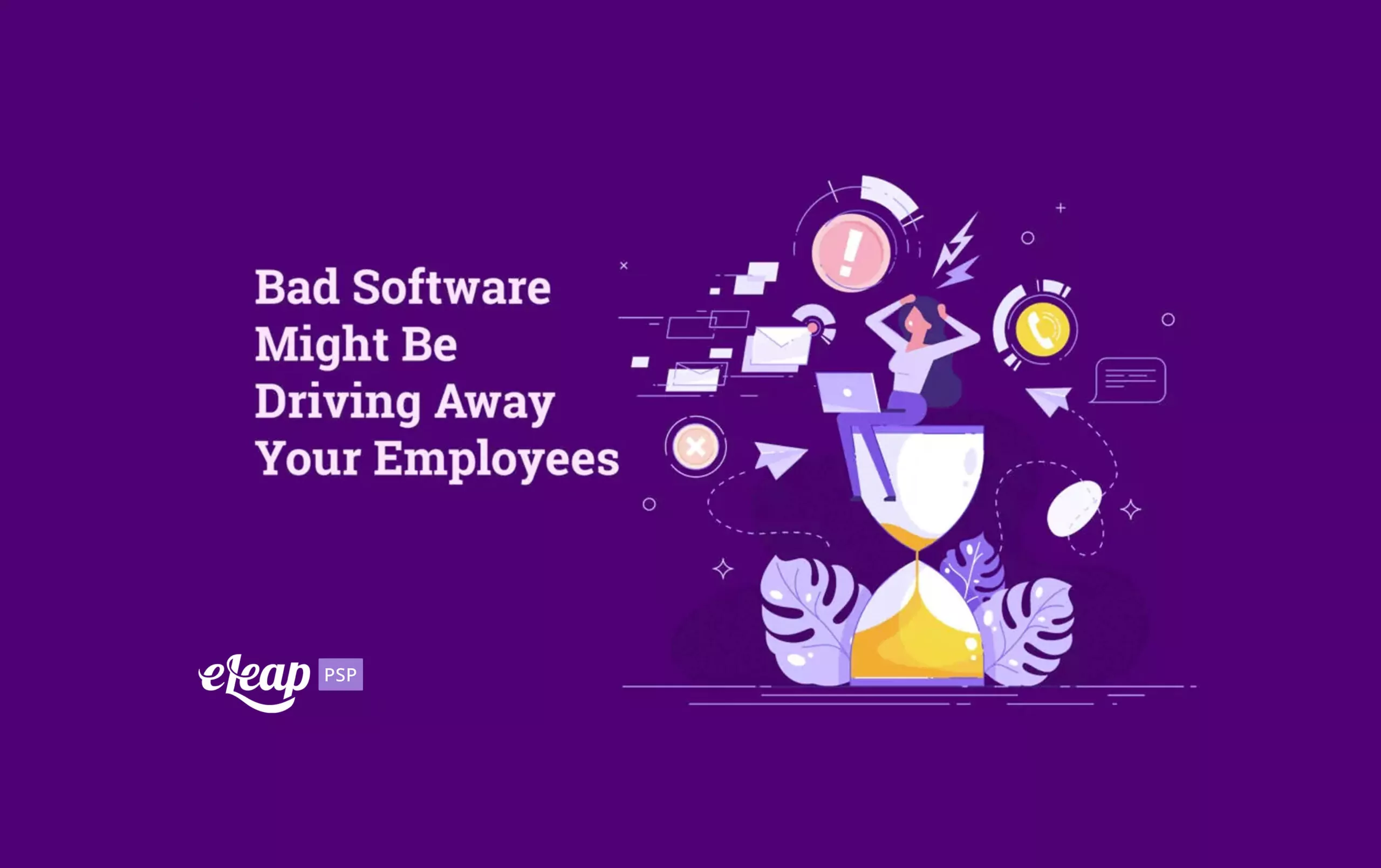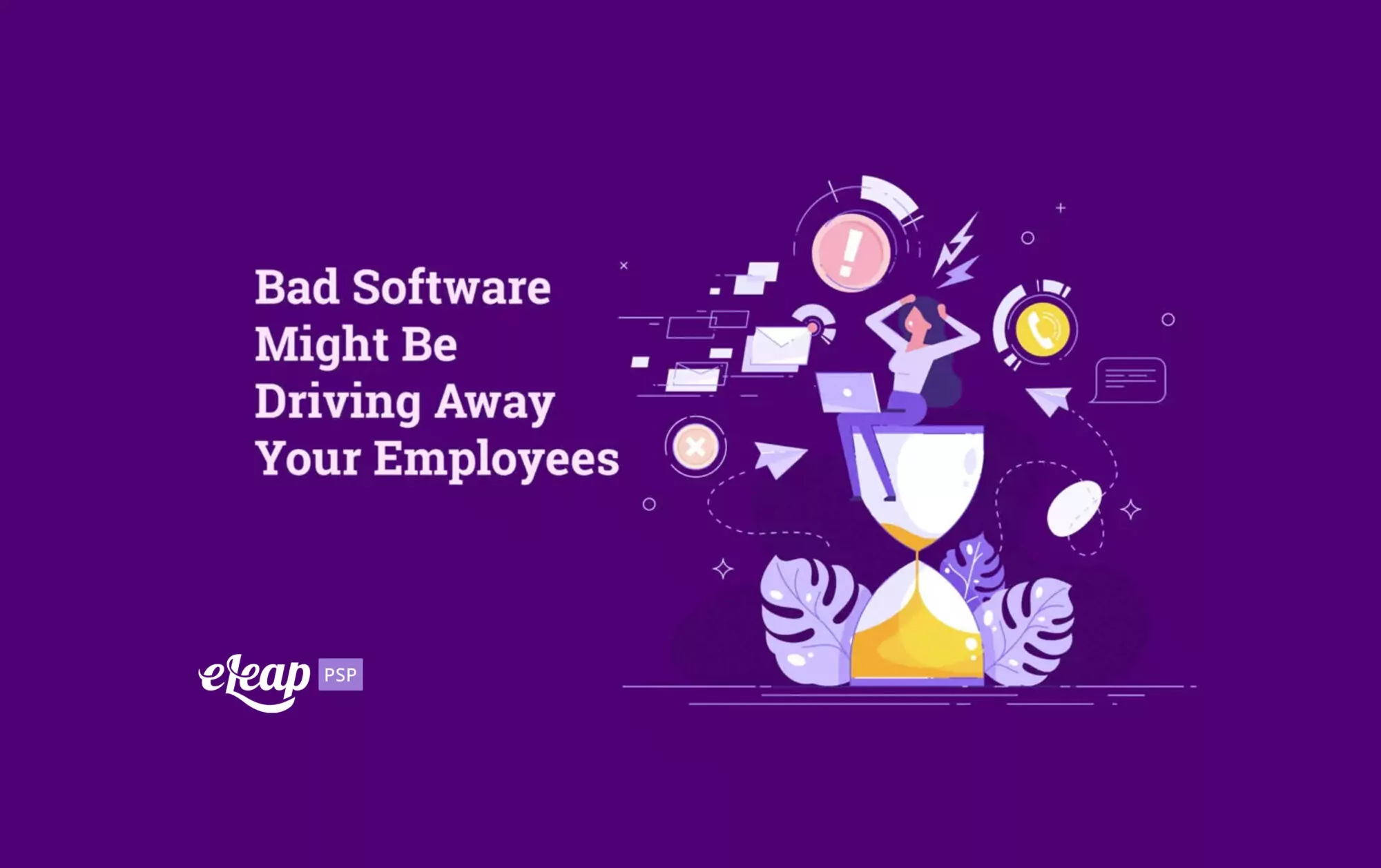Bad Software Might Be Driving Away Your Employees

Technology has become a ubiquitous part of our everyday lives, and as it continues to advance, we will see more and more new technology, particularly in the workplace. In fact, we’re becoming increasingly reliant on technology at work. And while technology seems like a positive thing for most organizations, it can quickly become problematic if you’re not sure how to manage it or select the right software. The employee experience with some business or productivity software products can be less than optimal.
You are doing your organization a disservice if you fail to consider how software impacts the employee experience at your organization. Software should tailor itself to your employees’ specific requirements as well as adapt to their day-to-day activities. The software you integrate into your organization should make employee’s lives easier, not harder. But far too many organizations fail to listen to employee feedback when it comes to the software they use.

Bad Software Makes for a Bad Employee Experience
Let’s get one thing straight, getting a better understanding of how software influences employee experience is important for organizations. If you survey your employees, you may be unpleasantly surprised to learn how many of them are dissatisfied with the software they have to use. And one thing is certain, unhappy or frustrated employees lead to lower levels of engagement and productivity. This is especially true if you are holding employees accountable for results for which the software they are using is a barrier to success. In fact, it’s not uncommon for employees to quit their jobs dues to frustrations working with the software. That’s right, bad software might actually be driving employees away from your company.
If you don’t address issues with your software, you might find that your peak performers will feel frustrated and overwhelmed. Eventually, they may decide that it’s easier to search for another job than to try and contend with software that makes their work harder to do.
You will not only lose your best performers if your employees encounter a negative work environment, but you also lose out on money. Turnover costs organizations a huge amount of money, and the cost of hiring and training new employees isn’t cheap, particularly if they’re only going to run into the same issues with the software.
So, not only is bad software potentially causing you to lose high-performing employees, but it’s also costing your organization money. But there are other reasons why bad software might be burning a hole in your organization’s wallet.
It seems there’s always some sort of cool new software coming out that your organization can’t live without. So, you spend the money to get set up with the latest technology, only for it to get abandoned after a few months. Maybe the software didn’t live up to expectations, or maybe it’s just not useful for your particular organization. Either way, how many software programs is your organization spending money on that aren’t really being used often, if at all? Shockingly, organizations waste approximately $40 billion on unused software annually. In fact, some companies can’t even name all the software that they have invested in!
While having a lot of software might not seem like a barrier to employees, it actually is. Having such a plethora of programs can feel overwhelming. It’s also largely redundant if employees have access to several software programs that all, essentially, do somewhat the same thing. It’s much better to give your employees access to a few highly useful and beneficial software programs than it is to have a plethora of programs that are largely useless.
Talk To Your Employees About Their Software Experience
Ever thought about what it would be like for your employees to be able to make more decisions regarding the software they use? After all, they’re the ones who have to work with the software daily, so why don’t’ we ask for their opinions more often? Employees should be involved by providing feedback about the experience they have had with each specific software program that your organization provides.
You should sit down with them and ask them how they feel about the current software like their HRIS, what tools would make their jobs easier, and what they wish they knew prior to purchasing the software. Remember, your employees, particularly your top performers, are counting on you to change things for the better. So, don’t just ask for feedback about software and then do nothing. Be prepared to produce actionable results, which may involve some initial effort and expense in switching software programs. At the end of the day, you’ll only end up making things worse if you falsely give them hope that you’re going to change the software that frustrates them.
Bear in mind that, when searching for answers about software, the internet is your friend. Yes, you should ask your employees for their feedback, but you can also access user reviews online to learn more about specific programs. Reviews are a very effective tool for choosing the right software. Thanks to the internet, getting to know what people really think has never been easier or more freely available. This is particularly helpful if your organization is small, or you have a limited number of employees to ask for feedback.
The key takeaway here is that talking to the people on your team is the key to finding the right software (whether it is performance review software or other kinds of HR software) for your organization. You should include your employees in the selection process, after all, they will be the ones using the programs you decide on. Allow your employees to tell you what they need, and trust that they know what they need.
When used properly, technology can transform the employee experience. But bad software has the potential to destroy the experience of entire workforces. That’s bad news for your organization! Your employees will only become more frustrated if you force them to work with bad or outdated software. Make it a priority to review your current company software solutions if you haven’t done so recently. You may be surprised to learn about ways in which software is failing your employees.